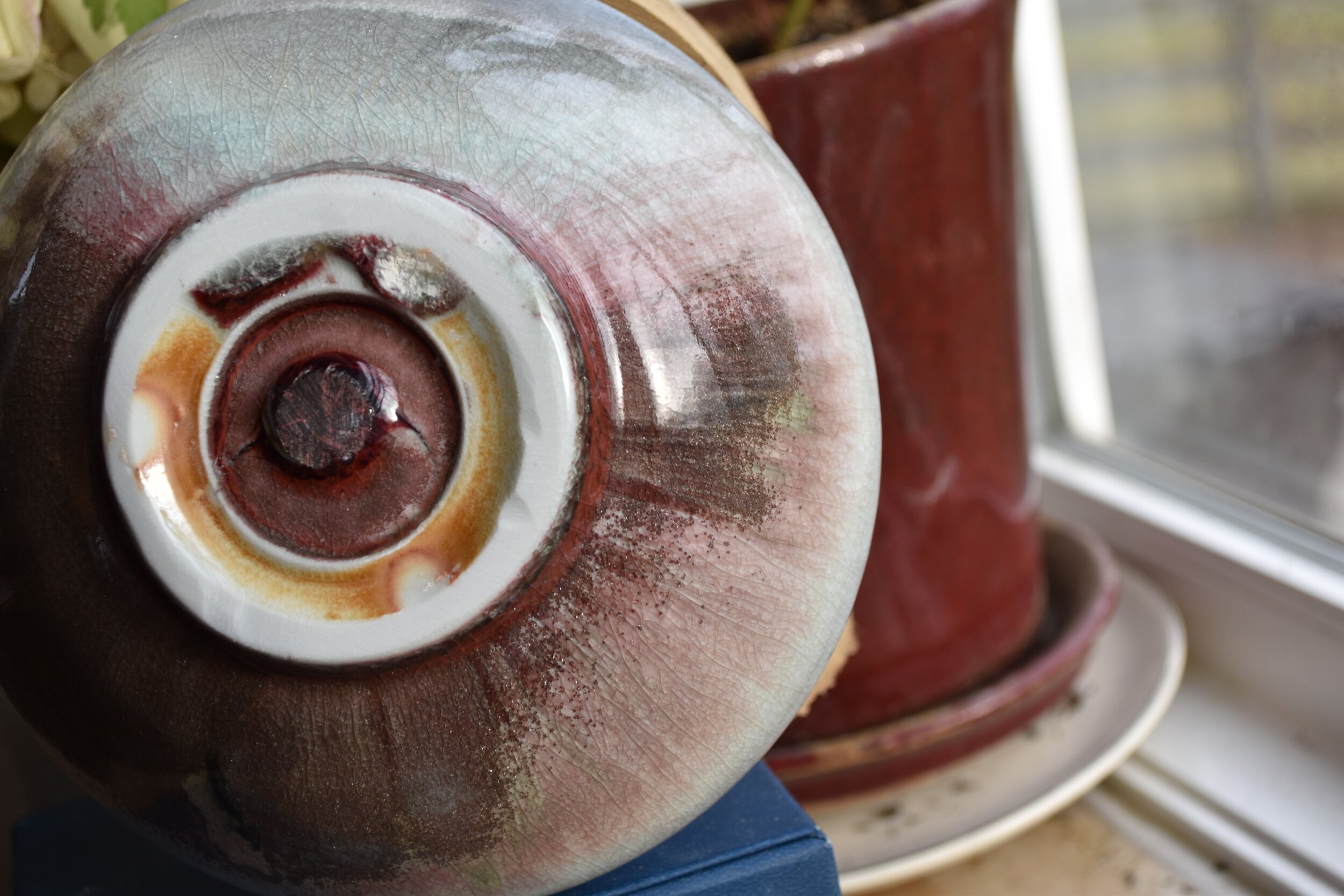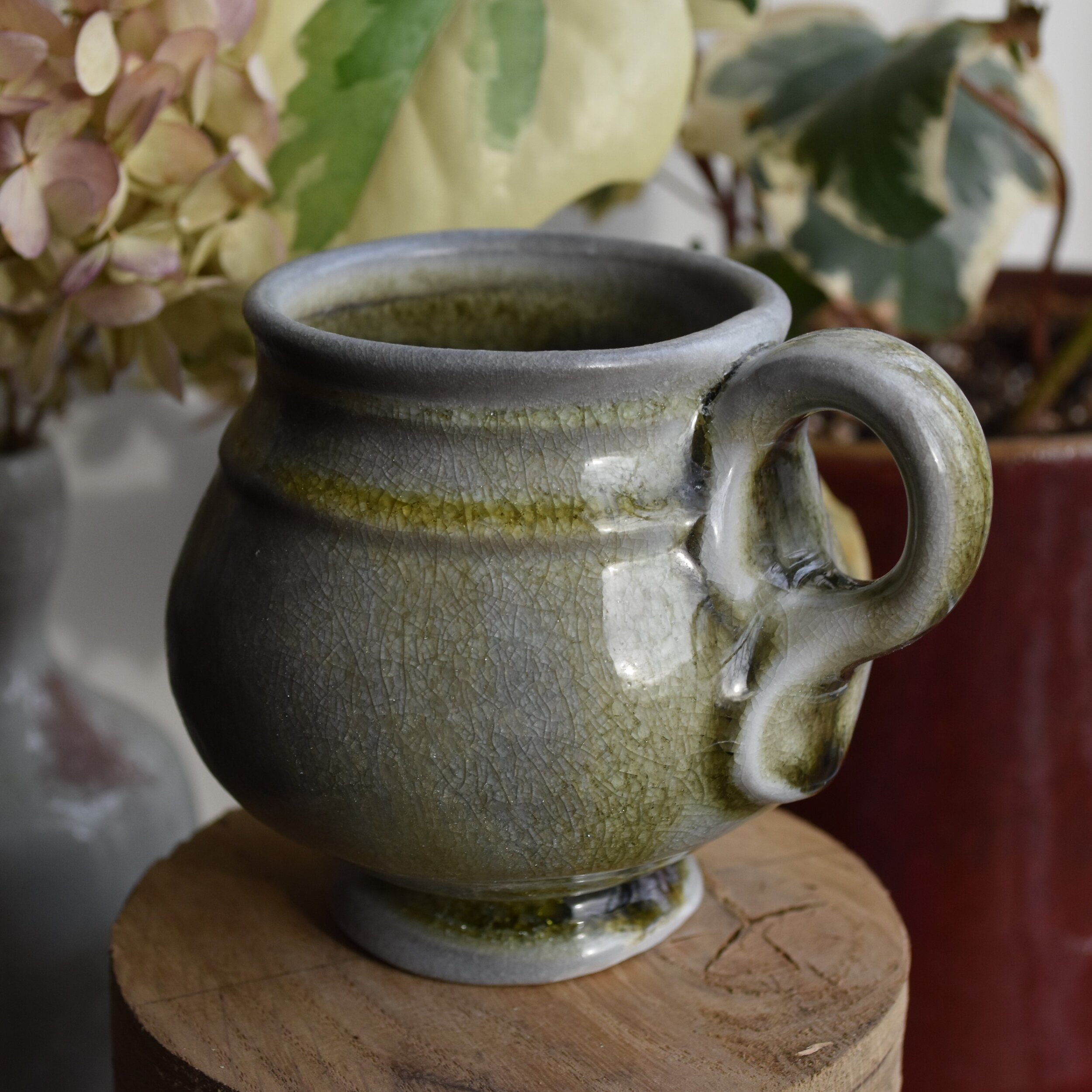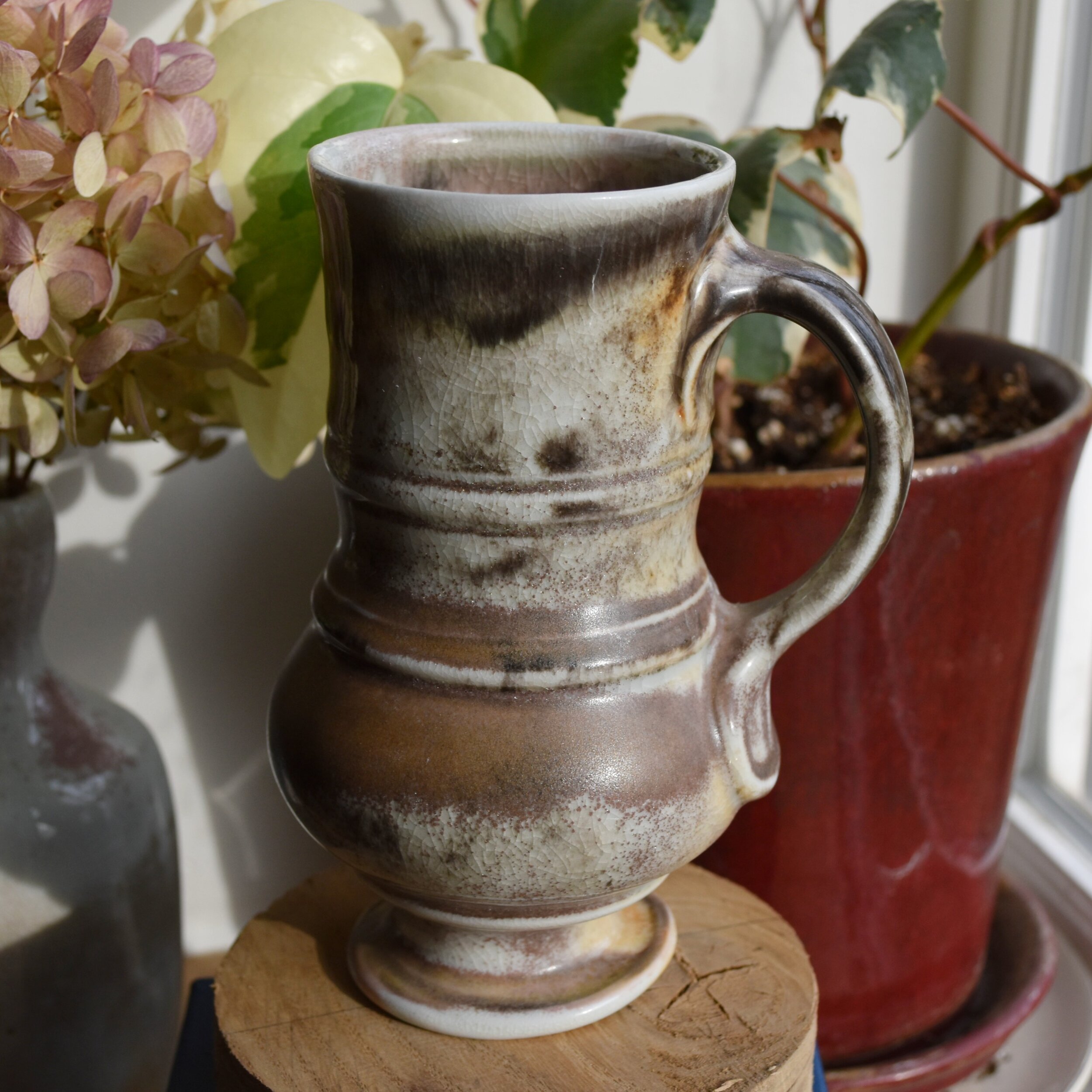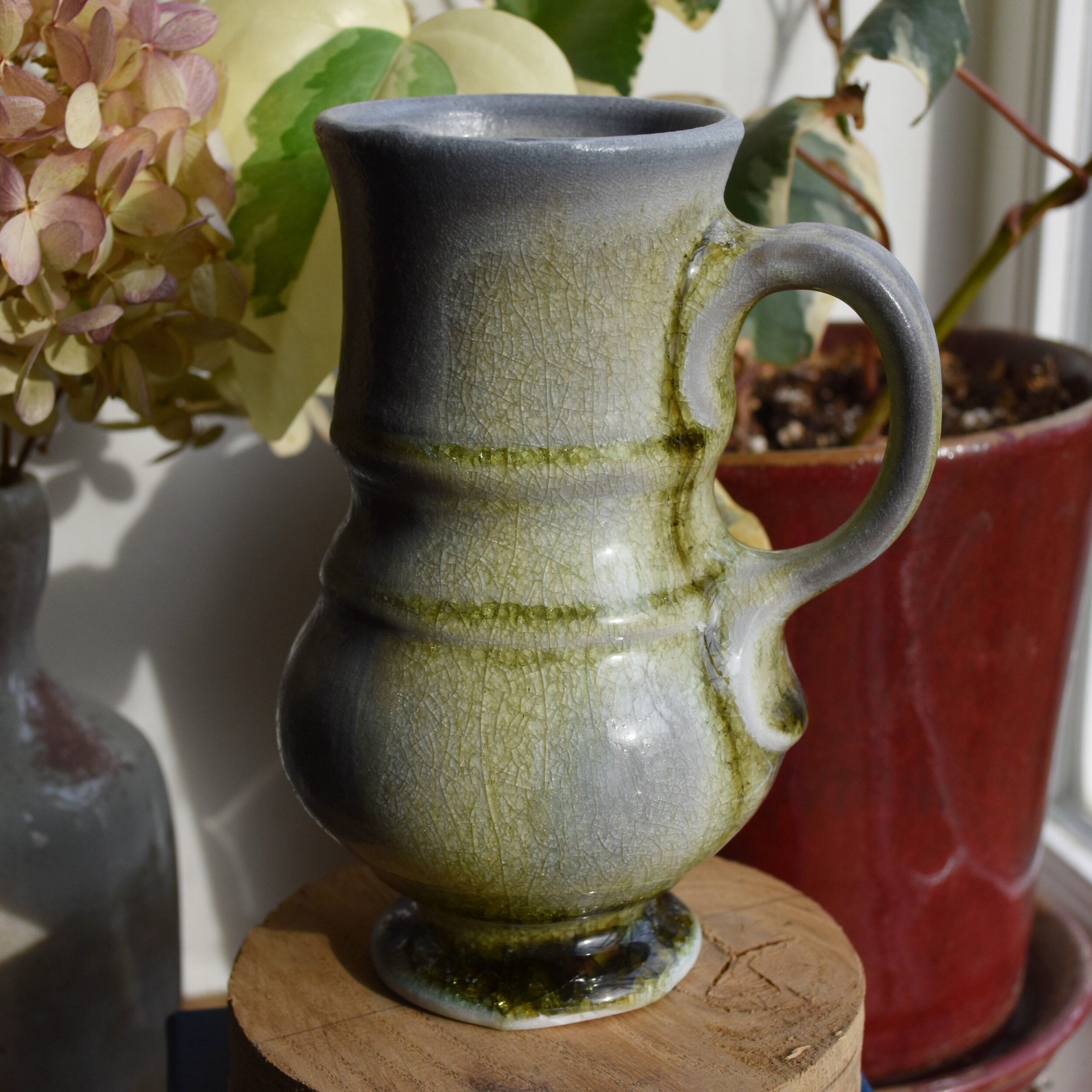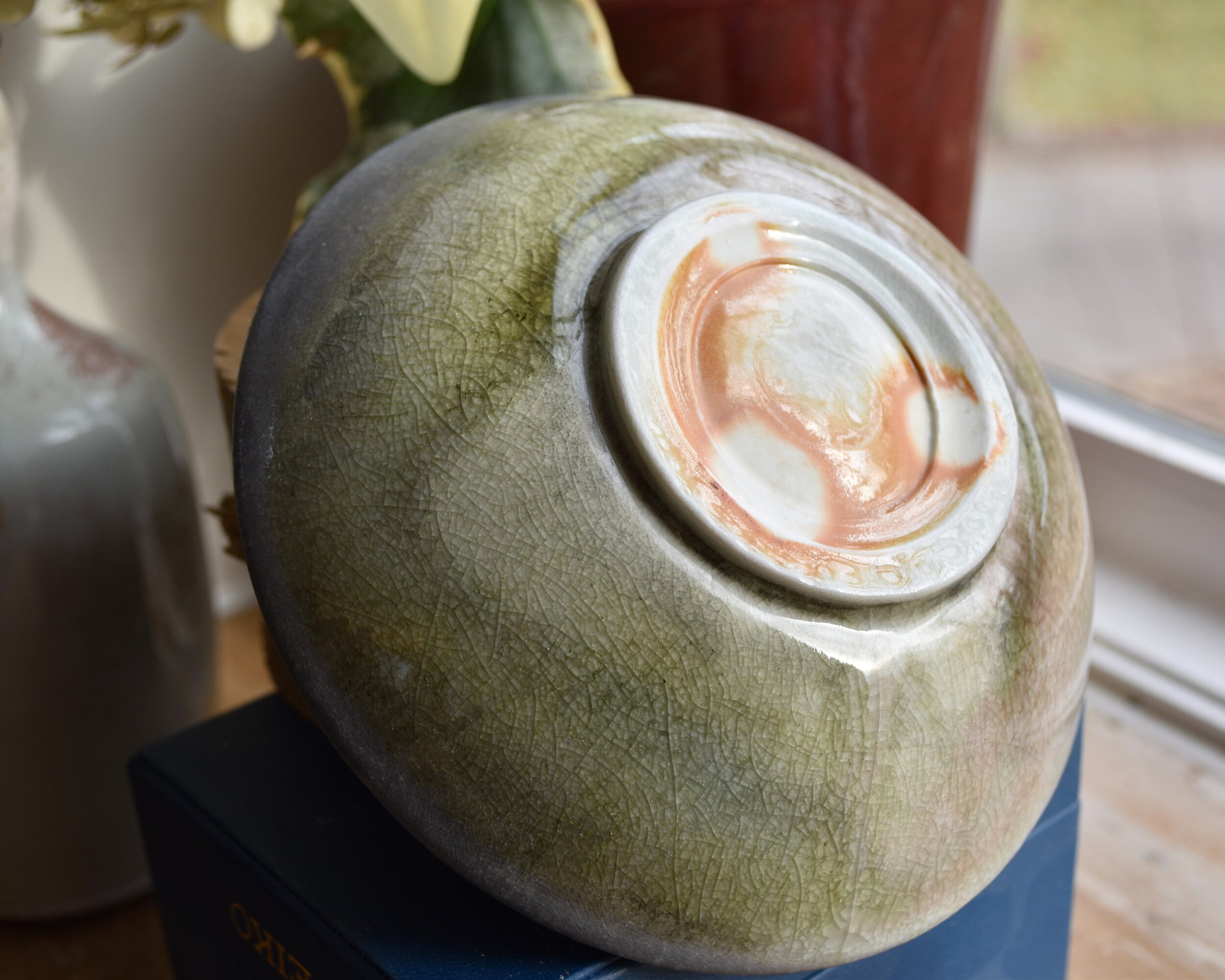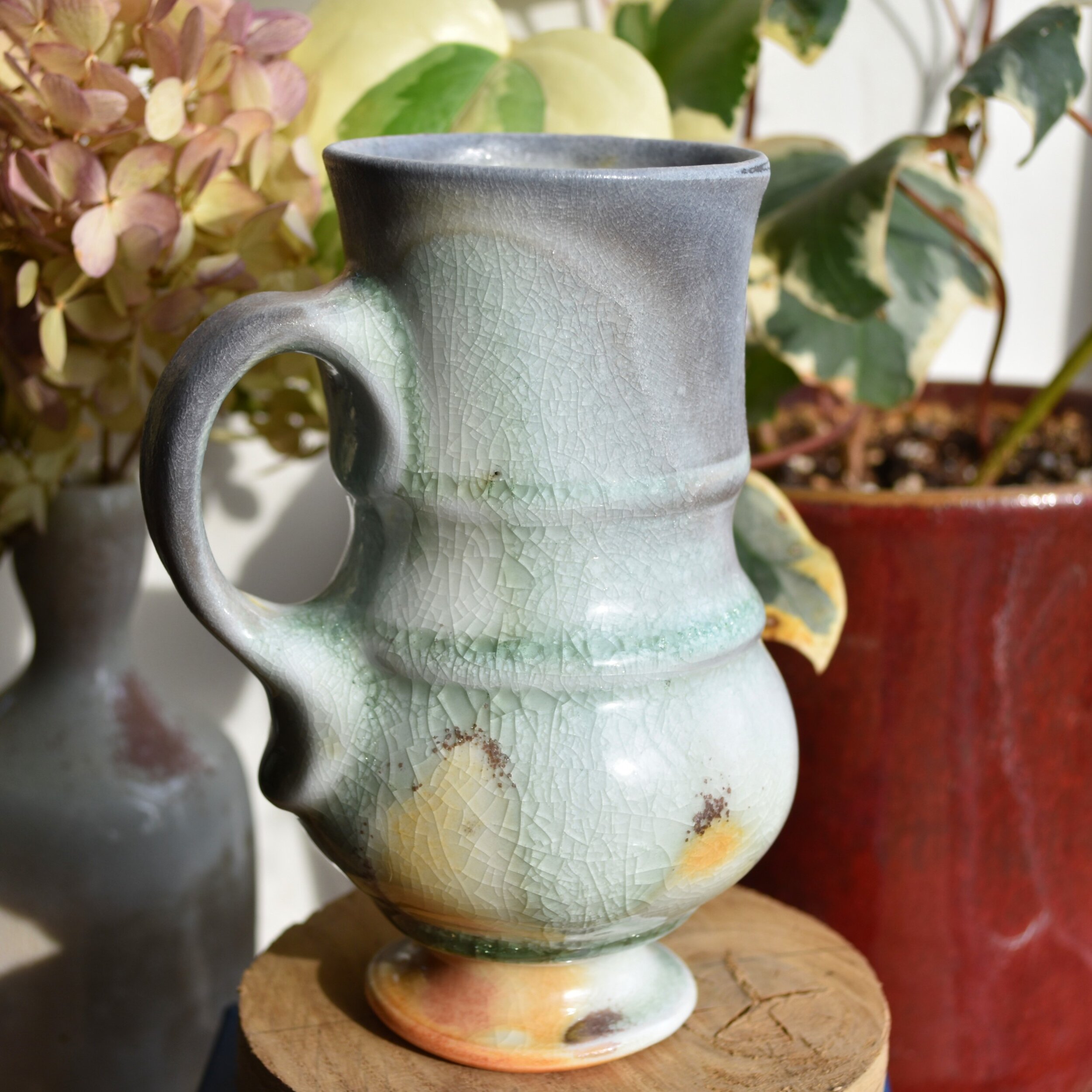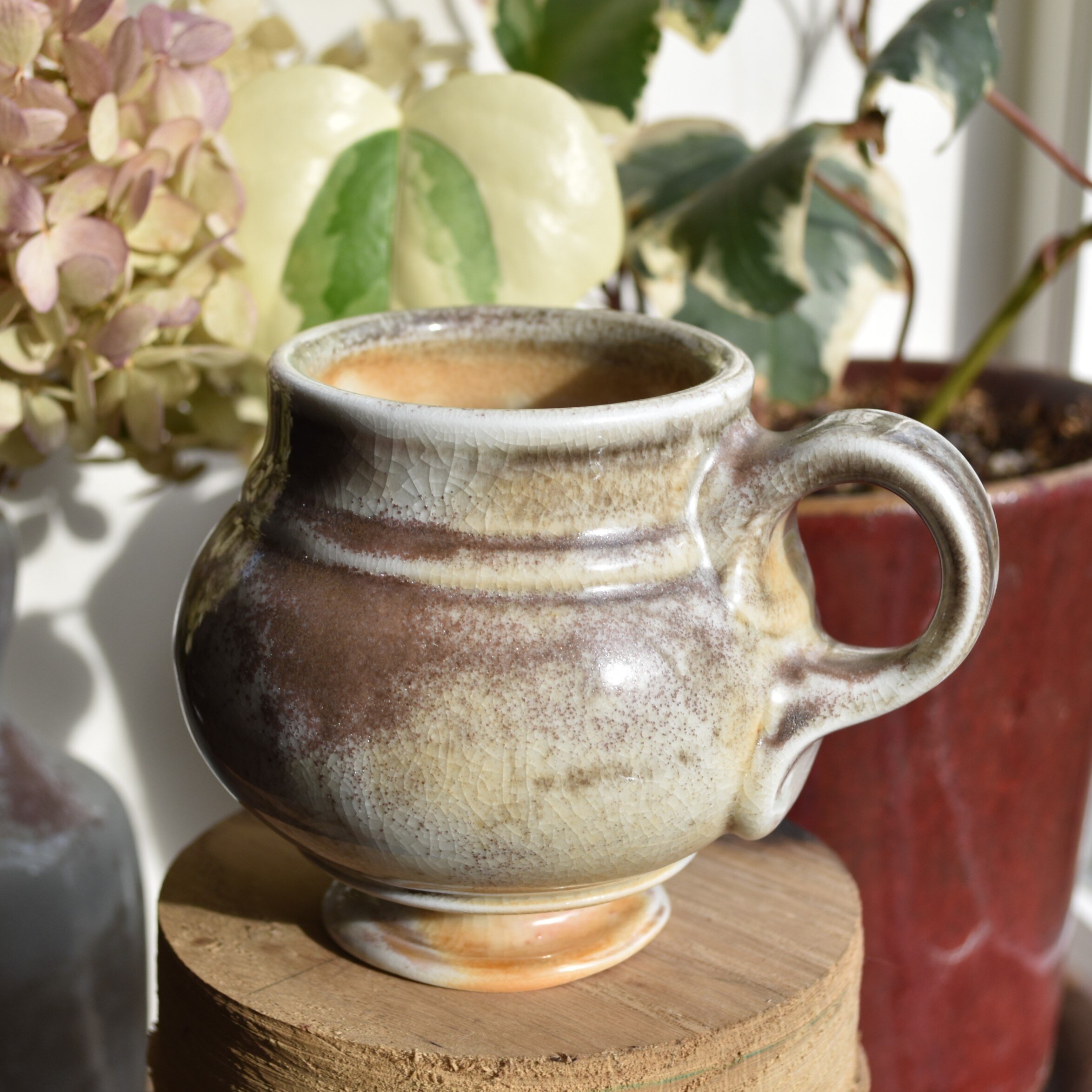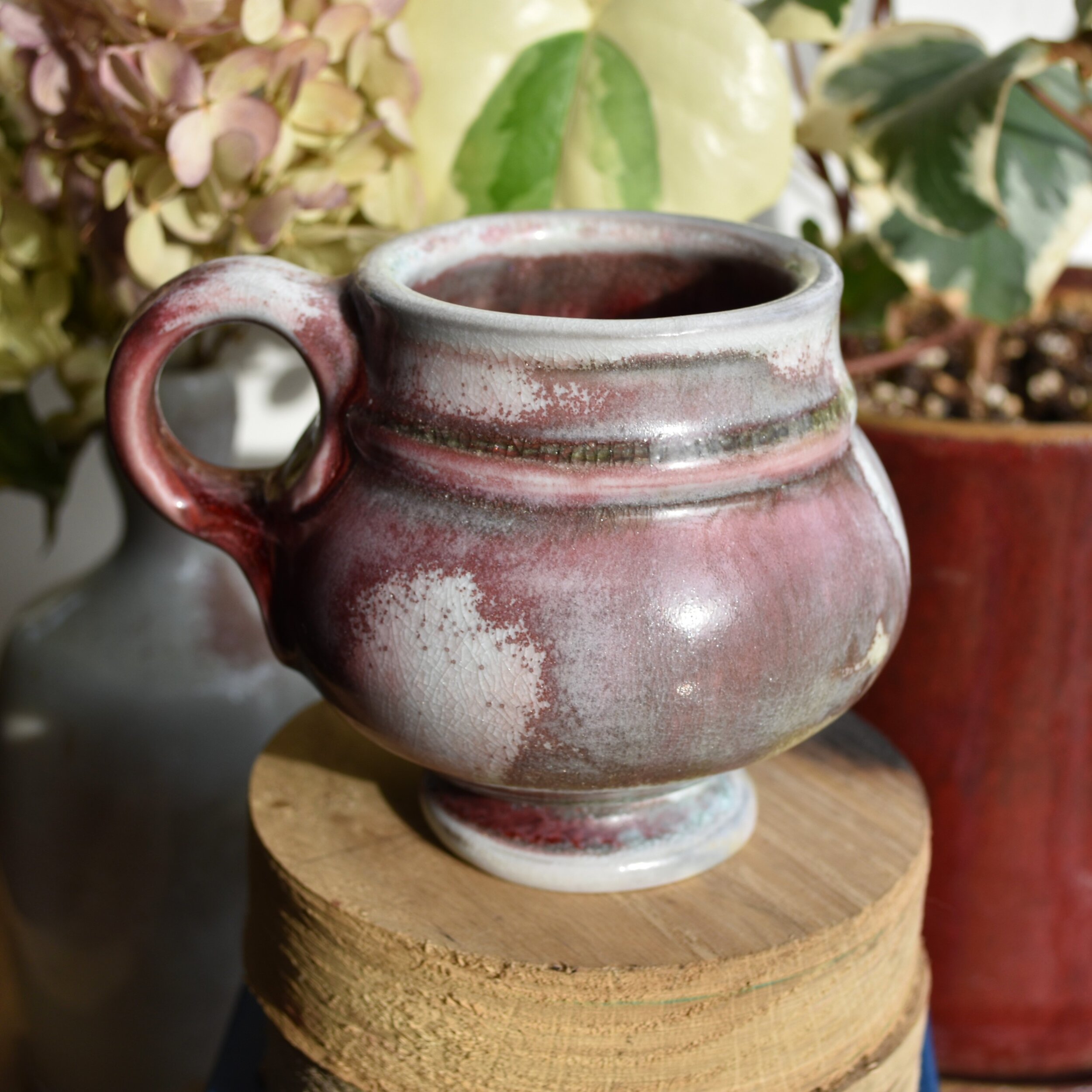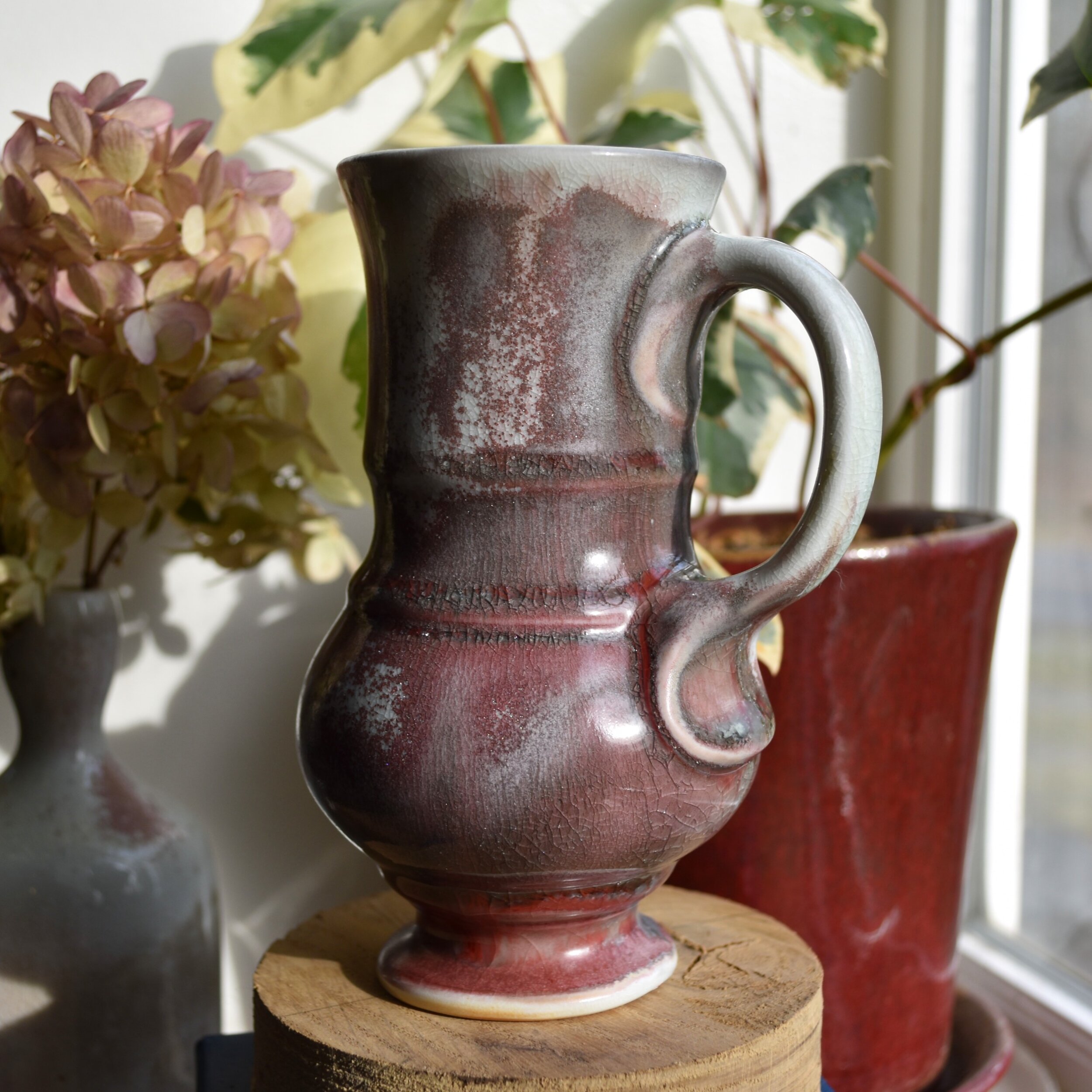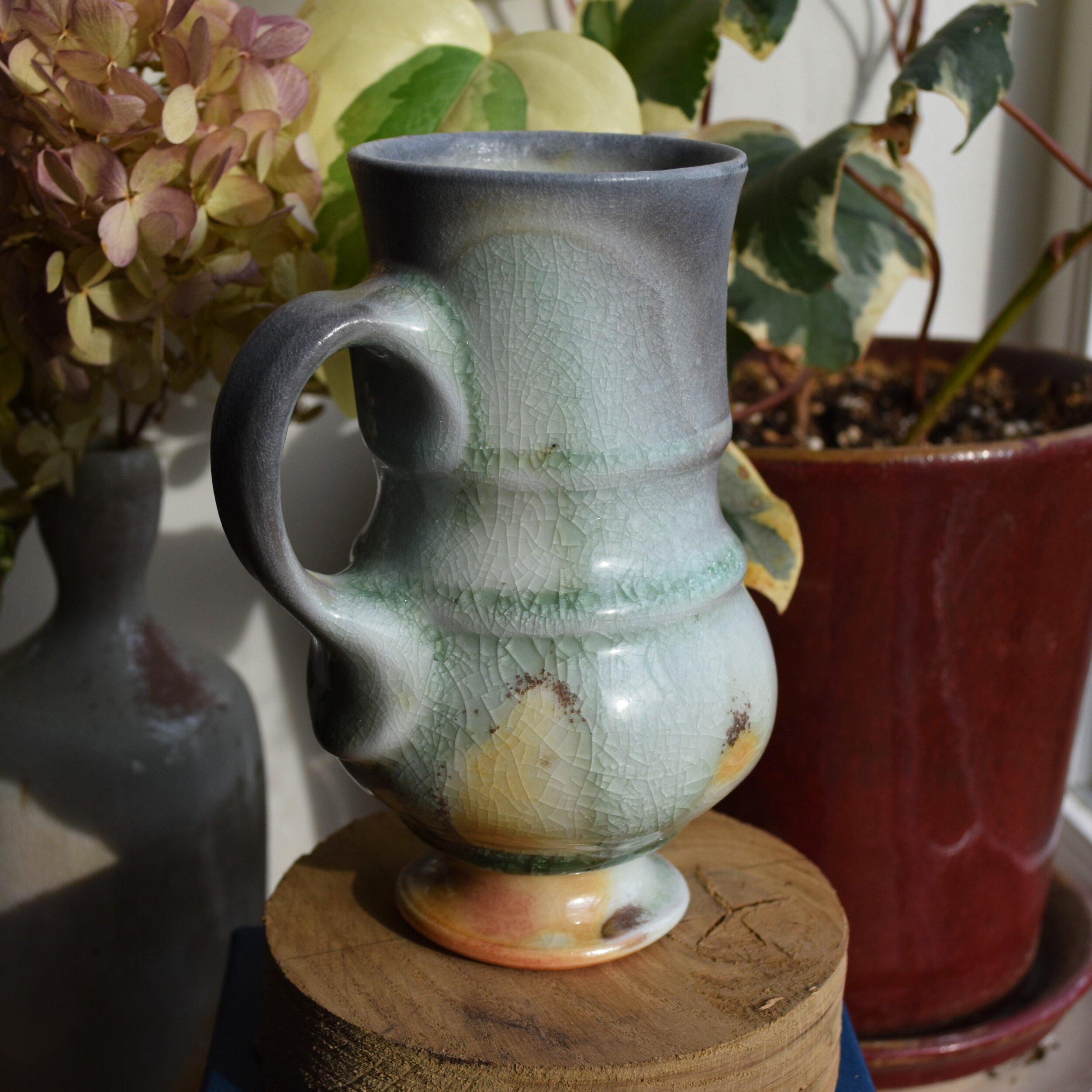Porcelain in Justin Rothshank’s Wood Kiln: Trust and Observation with Community Members
The charisma of the wood kiln's atmospheric designs capture the dreams of many potters. The effects of the swirling wood ash and intense heat produce pieces that can never be recreated. If you're lucky enough to capture copious amounts of melted ash in the space where you place your pot, you get jade and aquamarine jewels oozing down the surfaces.
To have access to wood firings you need: a plot of land free of zoning constraints, flattened and cemented, thousands of dollars worth of bricks, stacks and stacks of processed wood, and days worth of time to fire the kiln. For a young potter like me, this is impossible. I am very grateful to live in a region with access to two potters who are kind enough to share space in their kilns in return for firing shifts and wood processing.
This year I was invited to join potter Justin Rothshank's November wood kiln firing. In exchange for two 6 hour shifts, I was allowed roughly 20-25 pieces in the kiln. 99% of my pieces for this firing were made with porcelain clay because I was trying to recreate a specific effect I had seen happen last year and porcelain seems to be the best vehicle for the effect.
The effect in question looked like pink sugar clusters and streaks of lovely rose on some pieces of potter Mark Goertzen’s. I own one of his mugs with this effect and it inspires a severe itch that I will be scratching for years to come. The pink sugar was caused by particles of copper glaze flying off of copper glazed pots and settling on porcelain pieces glazed with a glaze that traps carbon particles. Not all of my pieces ended up surrounding their copper glazed counterparts as hoped, but I am so pleased with the results I got.
These pieces were my first attempts at wood-fired porcelain and I am so excited to see the next ones, whenever that may be.
Another wonderful aspect of community wood firings is the community part. The firing shifts paired two masked and responsibly distanced potters to stoke the kiln and staggered the schedule so that we each spent three hours with two people. I was thrilled to spend some time with my friend, Mark Goertzen, for whom I’ve worked as a studio assistant for about 6 years now. 2020 finds us rarely seeing each other when we used to spend 30 hours a week in the same room. I also finally got the chance to get to know local potter Sadie Misiuk and share some stories and laughs and worries with her.
This year has many potters questioning their path and worrying about the survival of their small businesses. I am among these worriers, but rallying together for a community kiln firing reminds me what is so important about our work: observing one another and observing nature. Staying humble and open as you surrender all of your hours of hard work to a roaring, hundred hour fire and the hands of a group of people you trust with your livelihood.
These days we want to trust the members of our towns and cities and governments to make good decisions to keep us safe and well. We should look and listen to the folks who have experience observing the laws of nature: namely virologists and climate scientists. And we should look and listen to the folks experiencing oppression and subjugation because of their race or class. All of this observation on our part should help inform our actions so we can be most kind and most responsible.
We cannot contain a global virus on our own, we cannot repair and reform our social structures alone, the same way that we cannot fire a kiln for 100 hours straight on our own. We need one another to survive and to thrive, we are called to trust and to be trustworthy with our lives and the lives of our neighbors.
